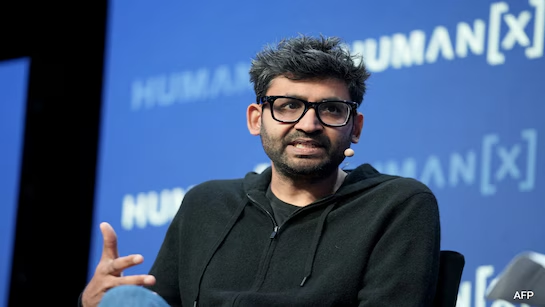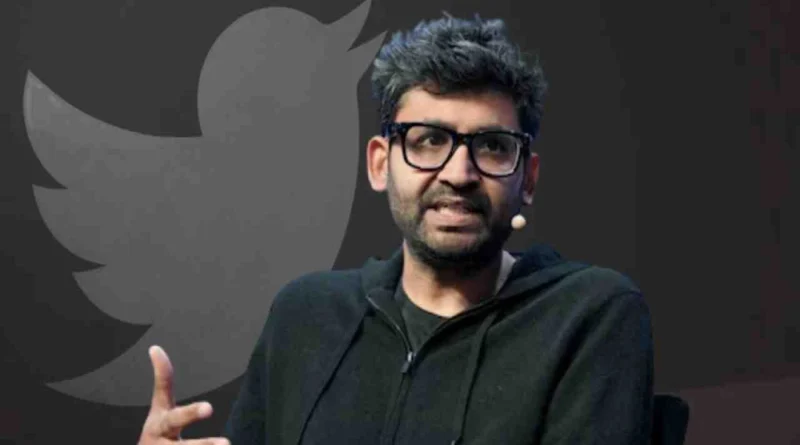Ex-Twitter CEO Parag Agrawal Launches AI Startup ‘Parallel’ to Build a Web for Machines
When Elon Musk took over Twitter (now rebranded as X) in late 2022, one of the most dramatic leadership changes in Silicon Valley unfolded. Among those who left the company during that turbulent transition was Parag Agrawal, Twitter’s then-CEO. His departure was abrupt, and for a while, Agrawal stayed out of the spotlight, keeping a low profile while the tech industry speculated about his next move.

Now, three years later, Parag Agrawal is back with a new venture that’s fully aligned with the biggest technological wave of our time: artificial intelligence (AI). His new company, Parallel Web Systems, aims to build what he calls a “web for machines.”
From Twitter to AI: Agrawal’s Journey
Parag Agrawal’s exit from Twitter was closely tied to Elon Musk’s $44 billion acquisition of the platform. A highly respected engineer and technologist, Agrawal had risen through Twitter’s ranks to become CEO in 2021, but his leadership was cut short within a year.
At the time, Musk had other plans for Twitter and quickly reshuffled the leadership team. Agrawal walked away, reportedly with a substantial exit package, but his next steps remained unclear.
Fast forward to 2025, and his comeback with Parallel signals not just a career reboot but also a bold statement: the future of the internet will not be built for humans alone, but for AI systems that need to interact with information in real time.
What Is Parallel?
Agrawal’s new startup is called Parallel Web Systems, or simply Parallel. The company is designing tools and infrastructure that allow AI systems to directly interact with the open web—something most AI models currently struggle to do at scale.
Today, most AI chatbots and agents rely on pre-trained models that are limited by the data they were trained on. While some can fetch information from the internet, the process is often clunky, unreliable, and not optimized for machine use. Parallel wants to change that.
The startup’s mission is to build web-scale infrastructure specifically for AI. This means creating an environment where AI agents can:
- Fetch information from the web in real time.
- Verify sources to ensure credibility and accuracy.
- Organize data in ways that make it usable for machine reasoning.
In essence, Parallel is trying to build a parallel web layer—one designed not for human browsing, but for intelligent machines.
Why Does AI Need a “Web for Machines”?
The internet as we know it was built for human consumption. Websites are designed to be read by people, with formatting, layouts, and designs that prioritize readability and user experience. While machines can scrape and process this information, the web was never optimized for them.
AI agents face challenges such as:
- Data overload – The web contains billions of pages, many of which are irrelevant or repetitive.
- Trust issues – Not all sources are reliable, and distinguishing fact from misinformation is difficult.
- Formatting complexity – Web content comes in varied forms—text, images, video—making uniform processing difficult.
- Real-time access – AI systems need up-to-the-minute data, but much of the internet is static or behind paywalls.
By creating a dedicated infrastructure for machines, Parallel hopes to solve these problems. If successful, AI systems could operate more effectively, offering users faster, more accurate, and more trustworthy answers.
How Parallel Fits into the AI Boom
The launch of Parallel comes at a time when AI is reshaping every aspect of technology and business. From OpenAI’s ChatGPT to Anthropic’s Claude and Google DeepMind’s Gemini, the race to develop smarter, more capable AI is intensifying.
But all these systems face a common bottleneck: access to live, reliable, structured web data. Parallel’s vision of a “web for machines” could become a crucial piece of infrastructure, powering AI applications across industries such as:
- Search engines – Making results more relevant and trustworthy.
- Finance – Enabling AI to process market data in real time.
- Healthcare – Allowing systems to fetch the latest research and medical guidelines.
- Education – Giving AI tutors access to constantly updated knowledge.
By addressing the data access problem, Parallel positions itself at the intersection of AI development and internet infrastructure.
Agrawal’s Edge: Why He May Succeed
Parag Agrawal is not new to building systems at scale. At Twitter, he played a key role in the company’s engineering backbone and had deep experience with distributed systems, data pipelines, and machine learning infrastructure.
This background gives him an edge in tackling the challenges Parallel faces. Building a web for machines requires:
- Massive data engineering capabilities
- Deep understanding of AI models and how they consume information
- Infrastructure that scales globally
Agrawal’s reputation and connections in Silicon Valley will also help him attract top talent and investors eager to back ambitious AI infrastructure projects.
The Challenges Ahead
While the vision is ambitious, Parallel will face several hurdles:
- Data access – Much of the internet is locked behind paywalls or private platforms. Building an open machine web will require navigating partnerships and licensing.
- Accuracy vs. speed – Fetching real-time data is one thing; ensuring it’s correct and credible is another.
- Competition – Big players like Google, Microsoft, and OpenAI are also exploring ways to give AI better web access.
- Monetization – Building infrastructure is expensive. Parallel will need a clear business model to sustain growth.
If Agrawal can solve these problems, however, Parallel could become a foundational company in the AI ecosystem.
The Bigger Picture: AI’s Shift from Static to Dynamic
Agrawal’s venture reflects a broader shift in the AI world. Until now, most large language models have been static snapshots of data, trained on text up to a certain point in time. While useful, they quickly become outdated and cannot adapt to fast-changing information.
The next wave of AI requires dynamic connectivity—systems that can constantly learn, update, and verify against the live web. Parallel is betting on this transformation, aiming to be the bridge between the static past and the dynamic future of AI.
A Parallel Future
When Parag Agrawal left Twitter in 2022, many wondered whether he would fade from the tech scene or resurface with something bold. With the launch of Parallel Web Systems, the answer is clear: he’s back, and he’s aiming high.
By building a “web for machines,” Parallel seeks to redefine how AI interacts with information. If successful, the startup could change not only how AI works but also how the internet itself evolves in the coming decade.
In many ways, Agrawal’s new venture is symbolic. Just as Twitter once reshaped how humans interact online, Parallel could reshape how machines do. And in a world increasingly driven by AI, that might be the bigger revolution.
Follow us for more news at Valleynewz.com

